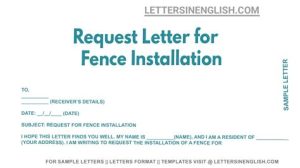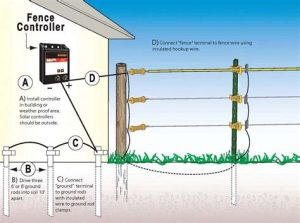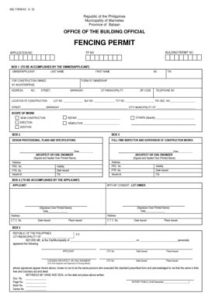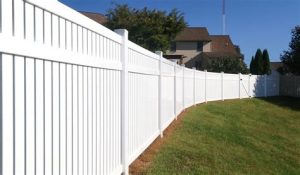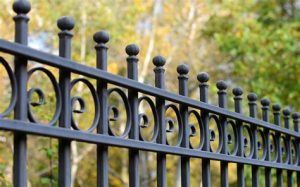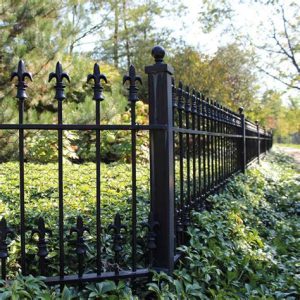Installing wood fence panels can transform your outdoor space, offering both aesthetic appeal and practical benefits such as privacy and security. However, diving into this home improvement project requires careful planning and understanding of the key elements involved. From selecting the right materials to mastering installation techniques, there’s a wealth of information to consider to ensure a successful outcome. In this article, we will guide you through everything you need to know about installing wood fence panels, including what to prepare, the essential tools and materials, design considerations, installation steps, and maintenance tips. Whether you’re a seasoned DIY enthusiast or a newcomer to home projects, our comprehensive guide will equip you with the knowledge needed to create a beautiful and durable wood fence that enhances your property for years to come.
What Do You Need to Prepare for Installation?
Preparing for the installation of wood fence panels involves several critical steps to ensure a successful outcome. Here’s what you need to keep in mind:
Taking these preparatory steps will help ensure that your wood fence installation process goes as smoothly as possible. Being well-prepared will save time and potential headaches later on.
Essential Tools and Materials for Wood Fence Panels
When embarking on your wood fence installation project, having the right tools and materials is crucial to ensure a smooth and successful process. Here’s a detailed list of what you will need:
Tools
- Measuring Tape: Essential for accurate measurements of the area where the fence will be installed.
- Post Hole Digger: Necessary for digging holes for fence posts, ensuring they are deep enough for stability.
- Level: Used to ensure that fence panels are installed straight and evenly.
- Power Drill: To efficiently drill holes and secure the wood panels and posts with screws.
- Saw: A circular saw or miter saw may be required for cutting wood fence panels to size.
- Hammer: Useful for driving in nails if you choose to use nails instead of screws.
- Safety Gear: Don’t forget gloves, goggles, and a dust mask to protect yourself while working.
Materials
- Wood Fence Panels: The main component of your fence; choose the type and size that fits your design.
- Wood Posts: These are necessary to support the panels and should be durable to withstand the elements.
- Concrete: If you plan to set your posts into concrete for added stability, be sure to have enough on hand.
- Screws or Nails: Depending on your preference, you may need either for securing panels to posts.
- Wood Stain or Sealant: To protect your wood from weather damage and prolong its lifespan, applying a stain or sealant is recommended.
Having these essential tools and materials will prepare you for a successful wood fence installation. Being well-equipped is a key factor in achieving the results you desire.
What Do You Need to Consider for Your Fence Design?
When planning your wood fence, there are several crucial elements to consider to ensure that the fence not only meets your functional needs but also enhances the aesthetic appeal of your property. Here are key aspects to keep in mind:
- Purpose of the Fence: Identify the main reason for installing the fence. Is it for privacy, security, or simply to define boundaries? Understanding the purpose will influence the design, height, and materials used.
- Style and Aesthetics: Choose a design that complements your home’s architecture and landscape. Options range from traditional picket fences to modern horizontal panels. Take into account the overall appeal that will enhance your property’s curb appeal.
- Height Regulations: Check local zoning laws and regulations that may limit the height of your fence. Compliance with these regulations is essential to avoid potential fines or the need for modifications.
- Material Selection: Selecting the right type of wood is important for durability and style. Common choices include cedar, pine, and redwood, each offering different benefits such as resistance to rot and insect damage.
- Local Climate: Consider how your local climate may affect the longevity and maintenance requirements of your wood fence. For instance, areas with high humidity may require treatments to prevent mold and mildew.
- Budget: Establish a budget that includes the cost of materials, labor, and maintenance. Knowing your financial limits can help you make informed choices about design and materials.
- Maintenance Needs: Some designs may require more upkeep than others. Think about how much time and resources you can devote to maintenance when selecting your fence design.
By taking the time to carefully consider each of these aspects, you can ensure a well-thought-out fence design that not only fulfills your needs but also enhances the overall look of your property.
Installation Steps: What Do You Need to Follow?
Installing wood fence panels can be a rewarding DIY project that enhances your property’s appeal and provides privacy and security. To ensure a successful installation, follow these structured steps:
- Plan Your Layout: Before you start, what do you need to consider? Measure and mark where each panel will be installed. Use stakes and string to visualize the boundaries of your fence.
- Check Local Regulations: Ensure that you are aware of any local zoning laws or regulations concerning fence installation. This might include height restrictions and property line boundaries.
- Dig Post Holes: Digging post holes is crucial for a sturdy fence. The depth of each hole should typically be about one-third the height of the posts. Place the posts at even intervals according to the width of your panels.
- Set Fence Posts: Place the fence posts into the holes and use concrete or dirt to secure them. Make sure they are plumb and level before the material sets.
- Attach Panels to Posts: Begin attaching your wood fence panels to the posts. Secure them with screws or nails, ensuring they are level. Leave an even space between the panels for a uniform look.
- Check for Stability: Once the panels are attached, give the fence a gentle push to check its stability. Make adjustments as necessary to ensure it is firm and secure.
- Finish the Top: Depending on your design, you may want to add a cap or another finish to the top of the fence panels to enhance durability and aesthetics.
- Inspect and Clean Up: After installation, inspect your work for any gaps or misalignments. Clean up the area, removing any leftover materials or debris.
- Weatherproof Your Fence: To prolong the life of your wood fence, consider applying a wood preservative or stain, especially if the wood is untreated.
- Schedule Regular Inspections: Finally, plan to check your wood fence regularly for signs of wear and tear, ensuring its longevity and maintaining your investment.
By following these detailed steps, you can confidently install your wood fence panels and enjoy the benefits they bring to your outdoor space.
What Do You Need to Maintain Your Wood Fence?
Proper maintenance is crucial for extending the lifespan of your wood fence panels and ensuring they remain in top condition. Here are some essential maintenance tips to keep in mind:
- Regular Inspections: Conduct routine checks at least once a year to identify issues like rot, insect damage, or warping. Early detection can prevent larger problems in the future.
- Cleaning: Clean the surface of your wood fence with a mild soap solution or a specialized wood cleaner. This will help remove dirt, mold, and mildew, which can degrade the material over time.
- Sealing and Staining: Apply sealant or stain every few years to protect the wood from moisture and UV damage. This not only enhances the appearance but also adds an extra layer of protection against the elements.
- Repainting: If your fence is painted, keep an eye out for peeling or fading paint. Repainting may be necessary to maintain the aesthetic and protective qualities of the surface.
- Pest Control: Check for signs of pest infestation, such as termites, and treat any infestations immediately to protect your fence. Preventive measures, such as applying ant or termite barriers, can also be useful.
- Repair Damages Promptly: If you notice any broken or loose boards, repair them as soon as possible. This helps maintain the structural integrity and visual appeal of your fence.
- Monitor Surrounding Vegetation: Keep plants and trees trimmed back from the fence to prevent moisture buildup and promote air circulation. Excess plant growth can lead to decay and pest problems.
By following these maintenance tips, you’ll ensure that your wood fence remains both functional and visually appealing for many years to come. Remember that what do you need to maintain your wood fence plays a vital role in its longevity, so don’t overlook these essential tasks.
Frequently Asked Questions
What materials are required for installing wood fence panels?
You will need wood fence panels, concrete or gravel for the posts, nails or screws, a level, a post hole digger, a tape measure, and a saw, among other tools.
How do I prepare the area before installing wood fence panels?
Clear the area of debris, rocks, and plants, ensuring that you have a level surface. Measure the perimeter where the fence will go and mark the locations of the posts.
What is the best way to set fence posts?
Dig holes for the posts at least one-third of their length deep. Place the post in the hole, make sure it is vertical using a level, and fill it with concrete or gravel for stability.
How do I ensure the wood fence panels are aligned correctly?
Use a string line or level to ensure that each panel is placed evenly. Adjust as needed before securing them to the posts.
What maintenance is required for wood fence panels?
Regularly inspect your wood fence for signs of rot or damage. Treat it with wood preservative, stain, or sealant to protect it from the elements.
How long can I expect wood fence panels to last?
With proper care and maintenance, wood fence panels can last between 15 to 20 years, depending on the type of wood and environmental conditions.
Are there any local regulations to consider before installing a wood fence?
Yes, check with your local zoning office for any regulations related to fencing, such as height restrictions or property line setbacks.
